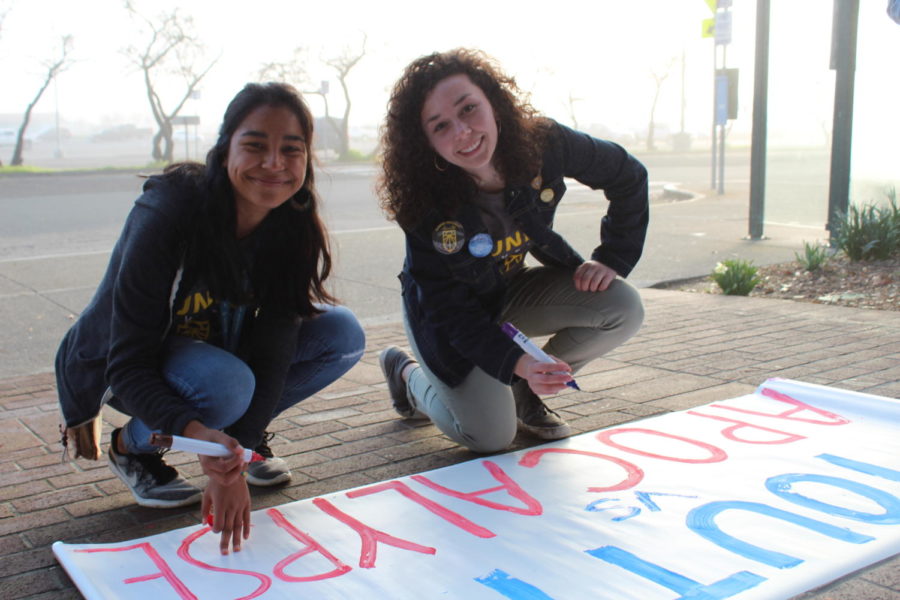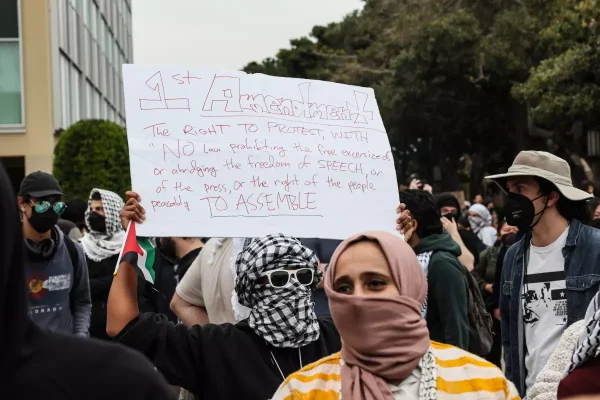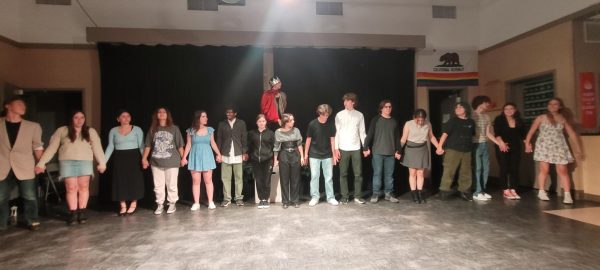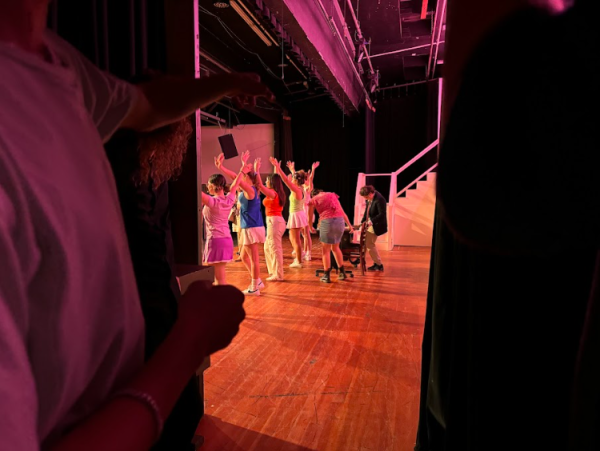Petaluma Youth Join International Climate Strike
On March 15, hundreds of thousands of students walked out from class to protest inaction against climate change. Joining students from 112 total countries, they marched from the Petaluma Regional Library to overpasses overlooking the freeway.
On March 15, students all over the world skipped or walked out of school to demand radical action to stop climate change and demonstrate their dedication to the fight for environmental justice. The school was one of the thousands to participate in the strike.
“These strikes will raise awareness around the world and open the eyes of the public to how dire of an issue this truly is,” said senior Amelia Bell, who attended the strike. “If kids are skipping school to hold marches and strikes than the cause must be more important than people realize, and perhaps it will make them stop and think and even take action themselves.”
Over 112 countries worldwide and 100 cities in the U.S. alone had climate strikes. Students in Switzerland, Poland, Sweden, Norway, Uganda, the United Kingdom, the U.S., and many more organized strikes on social media and by word of mouth. It all started with Greta Thunberg, a 16-year-old climate activist, and Swedish high school student. Thunberg has long been an advocate for climate activism and warns of the dangers of inaction. She says she was inspired by the students of Marjory Stoneman Douglas High School and the walkouts to protest the absence of gun sense legislation in the United States. Thunberg is now nominated for a Nobel Peace Prize and continues to inspire students and teachers alike to take action across the world. The 16-year-old started Fridays for the Future, a movement in which students vow to strike from school every Friday until global governing forces take action on climate change. The strike of March 15 was the first internationally organized movement to stand for climate justice.
Critics of the movement say that students should be in school and that their acts of civil disobedience cause further problems for teachers and schools. Others argued that students who want to change the world and solve climate change should study in order to become scientists, lawyers, and leaders. Participants in the strike responded with posters bearing slogans such as, “Why study for a future which may not be there?” and “Why go to school when you don’t listen to the educated?”
Some adults and officials feel that the strike is counterproductive, even going as far as to punish the students who choose to strike.
“It is important to emphasize that disruption increases teachers’ workloads and wastes lesson time that teachers have carefully prepared for,” said U.K. Prime Minister Theresa May on the youth climate strikes.
“Ok. We hear you. And we don’t care. Your statement belongs in a museum,” replied Thunberg on Twitter.
Students used #Fridays4Future, #ClimateStrike, #ClimateAction, #SchoolStrike4Climate, and #YouthStrike to connect over social media and the internet. Since the movement first began, it has been gaining major traction worldwide and has been reported on by many major news sources.
The U.S.-based climate strikes began with 13-year-old Alexandria Villasenor of New York, 12-year-old Haven Coleman of Denver, and 16-year-old Isra Hirsi of Minneapolis and quickly spread with the help of movements like Sunrise.
“A protest that is on an international level will create more of an impact and shows how this doesn’t only matter in the U.S., but it matters to the whole world,” said senior Elsie Jimenez, who attended the Petaluma Youth Climate March. “It helps our voices to be heard and will hopefully start more conversations about this topic … Climate justice is important to me because I will hopefully be living on his planet for a long time and I don’t want our planet nor the people on it to suffer.”













